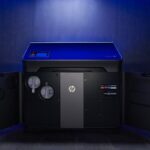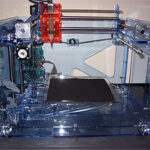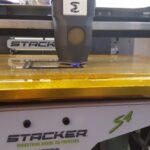

One of the earliest mathematics concepts you learn in school is that you cannot divide by zero, it’s impossible. However, India’s Divide by Zero Technologies is the exception to the rule. The Mumbai-based startup has seen impressive success with their series of 3D printers, which is comprised of five models so far, and they’ve just made a bit of history with the first patented 3D printing technology to be developed in India.
Advanced Plastic Fusion Modeling (APFM) is, according to Divide by Zero, a step ahead of today’s most-used 3D printing technologies, such as FDM, FFF and SLS. While these technologies are satisfactory, they each come with their own drawbacks, which Divide by Zero has addressed in the development of APFM. For example, while FDM/FFF can deliver some beautiful, quality prints, it can deliver a lot of headaches, as well – adhesion issues, imperfect surface finish, etc.
APFM differs from FDM/FFF in that whereas FDM printers maintain a consistent temperature throughout the entire print, APFM printers adjusts the temperature and flow rate of each layer depending on the demands of the design. Instead of a uniform flow of material, APFM adapts to the needs of each layer and the complexities of the design, greatly improving layer adhesion and improving the overall strength, tensility and accuracy of the final print.

APFM uses three techniques to deliver its results:
- Layer feature size recognition and temperature estimation and control is the first step in which the software reads information in the gcode such as layer length and temperature, then uses that information to work intuitively with the PID controller and heater to automatically improve the temperature of each melted layer
- Material flow deposition estimation and control: the slicing software uses the length and flow rate embedded in the gcode to work with the flow subroutine to automatically improve the movement of the extruder for the most accurate material deposition
- Extrusion failure repair and control: the software reads the length and extrusion length for each layer to monitor the amount of material being used by the printer. It then uses this information to run self-diagnostics to repair any flaws or protect the extruder head by notifying the user with an error message.
As 3D printers go, APFM printers are pretty smart. In addition to the adaptive flow rate and temperature control, APFM sets itself apart from other technologies with its specialized materials, which meet the thermal, elasticity and RA value requirements for industrial parts. In addition, thanks to APFM’s selective deposition rates, even large prints can be printed much faster than with typical FDM technology.
According to Divide by Zero, APFM delivers results of comparable or even superior quality to those produced by SLS 3D printers – but at much less cost. Currently, the technology is only available with Divide by Zero’s Aion line of printers, which includes the giant Aion 500 industrial 3D printer and the more advanced variation, the Aion 500 MK2. The Aion 500 has already been adopted by several leading tech companies and design firms in India.
APFM technology is ideal for functional prototyping, Divide by Zero says, thanks to the strength and tensility of the parts it produces. You can read more about the technology in a white paper recently published by the company. Discuss in the APFM forum at 3DPB.com.
When it comes to 3D real estate visualization in the USA, our service provides the perfect solution for bringing property listings to life. Through our platform, you can easily access cutting-edge 3D renderings that showcase your real estate projects in a way that attracts potential buyers and investors. Whether it's residential, commercial, or mixed-use properties, our team of experts uses advanced technology to create immersive visualizations that highlight the best features of your property, making it easier for clients to imagine the space as their own.
Through our website, you can quickly get high-quality 3D real estate visualizations that are tailored to your specific needs. With our help, you'll stand out in the competitive real estate market by offering potential buyers a realistic, interactive view of your property. Our efficient process ensures a fast turnaround time, while our attention to detail guarantees that every aspect of the property is represented accurately, giving you a powerful marketing tool to promote your real estate listings.






